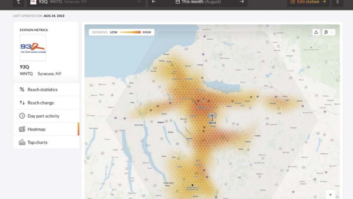The National Radio Systems Committee is taking steps to help radio broadcasters elevate emergency alerting in the United States.
A new EAS guideline adopted at the NAB Show in Las Vegas sets forth recommendations regarding how broadcasters can best implement EAS functionality at their facilities.
The National Radio Systems Committee (NRSC) is jointly sponsored by the National Association of Broadcasters and the Consumer Technology Association and works as a vehicle to allow radio broadcasters and receiver manufacturers find solutions to common problems in radio broadcast systems.
The NRSC’s EAS Guideline will not represent a requirement for compliance to any standard, according to the group. However, they hope broadcasters, automation software vendors, transmission equipment manufacturers and consumer electronics manufacturers will find the recommendations in the document useful.
The NRSC’s Data Services and Metadata (DSM) Subcommittee adopted the new guideline “Best Practices for Delivering Emergency Alerts and Information for FM Radio Broadcasters” (NRSC-G303) at a meeting on Saturday.
The action was taken at the first series of NRSC Subcommittee meetings to be conducted face-to-face at an NAB Show since 2019. More than 30 attended the meeting in Las Vegas, according to David Layer, NAB VP of advanced engineering technology.
[For More News on the NAB Show See Our NAB Show News Page]
The NRSC EAS Guideline includes technical information about radio broadcaster participation in EAS, as well as background information on the FCC rules pertaining to EAS and the infrastructure used to generate alert messages.
Methods of delivery of both EAS messages as well as lifeline emergency information provided by radio broadcasters are discussed in the document, Layer said.
The NRSC’s guideline includes a special focus on using metadata over FM radio signals, both analog and digital is included, as well.
The guideline work was conducted within the Emergency Alerting and Information Working Group, chaired by Matt Straeb, Global Security Systems. The DSM Subcommittee is chaired by Steve Shultis, New York Public Radio. Layer said the guideline will be released after a final procedural legal review, most likely sometime in May.
The FCC has been working on upgrading the Emergency Alert System in the U.S., which will directly impact radio and television broadcasters. It also recently updated its rules to increase the reliability, speed and accuracy of Wireless Emergency Alerts.












